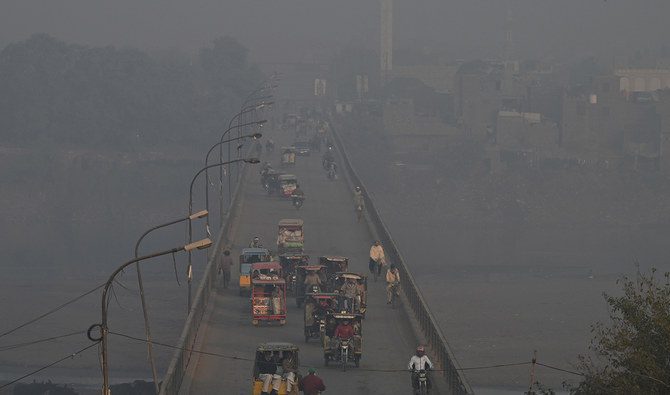Driving late in the dense haze of pollution presents a new problem for people traversing Pakistan’s busy cities as the sun sets. Although health hazards are frequently the primary worry, driving in the pollution at night has more practical consequences than only harming one’s health. It also affects people’s finances and changes the dynamics of families all over the nation.

Better Visibility and a Rise in Accidents:
The substantially reduced vision that comes with driving late in the haze is one of the most urgent risks. Traffic signals, road markers, and even the cars a few metres in front are all obscured by the dense cloud. This decrease in visibility makes it far more likely that there will be accidents, putting both vehicles and pedestrians in danger.
Economic Consequences:
Driving in pollution at night has significant cost consequences in addition to the obvious safety risks. Owners of vehicles pay more for insurance because of the higher chance of accidents. In addition, accident-related replacements and repairs add to the financial strain on people and families.
Fuel Waste and Rising Expenses:
When driving in pollution, one must exercise caution, which frequently means going slower and stopping more frequently. This careful driving style results in fuel inefficiency, which has a direct financial impact on those who have to fill up more often because of the decreased mileage. The growing expense of travel for everyday commuters is partly caused by the increased fuel usage.
Disturbance in Daily Journeys:
Driving in the pollution at night disturbs people’s everyday commutes, especially those who depend on it for transit to work. A nation where a large number of families rely on several sources of income, difficulties at work, the possibility of losing one’s job, and unstable finances might result from inefficient commuting.
Effect on Education of Children:
The difficulties of late-night driving in haze have a direct effect on schooling for families whose children attend school. There may be interruptions in the school routine and a negative impact on the pupils’ overall academic performance if parents are afraid to transport their kids to school or attend school functions.
Restrictions on Social Engagement:
Families are unable to participate in social activities since driving in pollution is dangerous, especially at night and in the evening. The cultural fabric of Pakistani society is impacted by this restriction on social connections, which makes it more difficult for communities to unite through festivals, celebrations, and get-togethers.
Growing Dependency on Alternative Modes of Transportation
Families that have to deal with the difficulties of driving in the haze at night could choose to use public transportation or ridesharing services as an alternative. Although these options address the current safety issues, they would result in higher daily commute expenses, which would have an effect on family budgets and discretionary money.
Drivers’ Psychological Effects:
The persistent tension and worry that come with driving through smoky neighbourhoods after dark can have a negative impact on drivers’ mental health. Stress levels are raised and general quality of life is negatively impacted by the dread of accidents and the annoyance of slow-moving traffic.

In conclusion, there are practical implications for people and families as well as health risks associated with driving after dark in Pakistani pollution. Beyond the immediate risk of impaired sight, a complicated web of obstacles is created by the economic ramifications, interruptions to daily routines, and restrictions on social activities. A multifaceted strategy is needed to address these practical issues, including infrastructure upgrades, public awareness initiatives, and a joint effort to lessen the negative effects of pollution on the lives of those who drive late at night.


